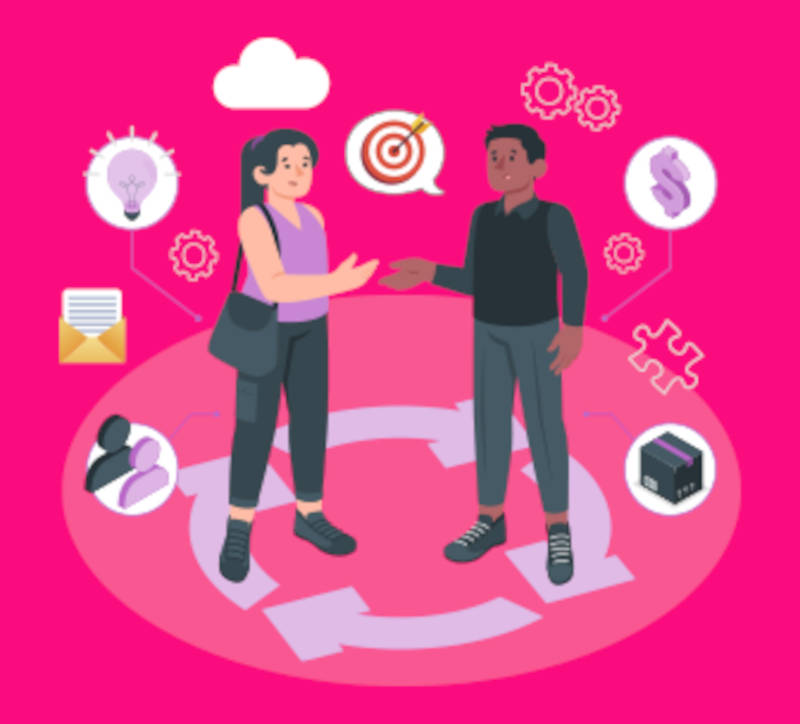Email Marketing
How to Build Customer Connections When Starting Out
Do Things That Don’t Scale: How Early Startups Can Succeed by Focusing on People
Paul Graham, the founder of Y-Combinator, shared a key insight in his essay “Do Things That Don’t Scale”: startups don’t just magically “take off.” Instead, founders make them take off by putting in unscalable, hands-on efforts. Here’s how.
1. Acquire Customers Manually
Graham argues that founders often need to personally recruit their first customers. It’s not glamorous, but it works. For instance:
- Stripe’s founders sought out users at Y-Combinator events.
- Airbnb’s founders went door-to-door in New York.
- Pinterest’s co-founder connected with users at design conferences.
Why avoid this approach? Many founders would rather code or work from their desk than face rejection. But Graham emphasizes focusing on a weekly growth rate over raw numbers: a 10% growth each week can lead to thousands of users in a year.
2. Be Social on Social Media
Simply posting content isn’t enough. Engaging with followers, replying to comments, and networking with influencers are crucial, even though they take time. Many entrepreneurs mistakenly believe that acting “above” social interactions will project status, but this only appears arrogant.
Instead, set aside time each day to interact meaningfully with others on social media. Building real relationships can lead to more followers and loyal customers.
3. Offer a Free Service as a Lead Magnet
Lead magnets typically involve downloadable content, but offering a free service adds more value and trust. Here’s how:
- Service businesses could offer a free consultation before upselling a package.
- Ecommerce stores might offer styling help to build trust before a purchase.
- Software companies can help with strategy, then provide software to implement it.
A valuable free service can attract more leads and boost conversions.
4. Personally Welcome New Customers
Personal touches matter. For instance, Wufoo used to send handwritten thank-you notes to each new user. Simple gestures like these can help build loyalty early on.
5. Personally Onboard New Customers
Helping customers get set up is critical for engagement. Airbnb’s founders even took photos of hosts’ properties to improve listings, while Stripe’s founders personally set up accounts for new users at events. This hands-on approach can be the difference between a customer’s success and frustration.
6. Send Progress Reports to Customers
Updating customers on their progress can build trust and transparency. If you’re offering a service, keep them informed at every stage. If you sell software, share monthly progress reports. Even for ecommerce, sending notifications at each order step reassures customers.
7. Reach Out to Inactive Customers
If a customer stops using your product but keeps paying, you have two choices:
- Continue to collect payments passively.
- Reach out to check in and offer assistance, even if it means canceling their subscription.
Helping inactive customers shows integrity and builds goodwill. They’ll likely have a positive view of your business—even if they pause their subscription.
8. Do Customer Support Yourself
Founders can learn a lot from handling customer support themselves. It helps you understand users’ needs and pain points, and the personal touch can make a big impact.
9. Conduct Customer Exit Interviews
Cancellations happen, but every exit is a learning opportunity. Reach out to canceled customers, thank them for their feedback, and even offer a quick chat. Listening to why they’re leaving can reveal valuable insights.
Want to Turn Your Visitors Into Lifelong Customers?
ClickFunnels co-founder Russell Brunson built his business with storytelling, which helped him create a strong community and loyal customers. His book Expert Secrets dives into these strategies and is available on Amazon, or directly from ClickFunnels (just pay for shipping).
Start Small, Scale Later
Graham’s advice applies to startups and new businesses alike. Forget about automation or scaling in the early stages. Focus on building customer relationships and getting hands-on.
In summary, here are the nine ways to build customer relationships from the ground up:
- Acquire customers manually
- Be social on social media
- Offer a valuable free service as a lead magnet
- Personally welcome new customers
- Personally onboard new customers
- Send progress reports
- Reach out to inactive customers
- Do customer support yourself
- Conduct exit interviews
With these strategies, any business can lay the foundation for long-term growth—one unscalable action at a time.
>>>Join The One Funnel Away Challenge<<<






























